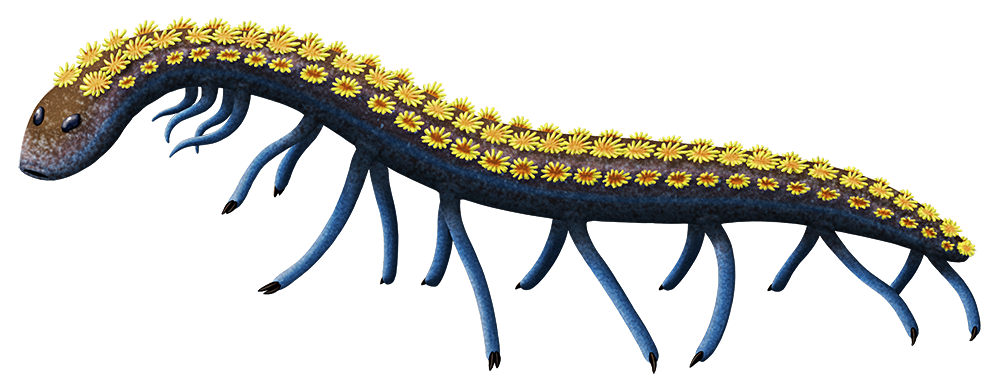Thanahita distos, a recently-named species from the mid-Silurian of the UK (~430 mya).
This little lobopodian was very closely related to the famous Cambrian Hallucigenia, but it lived over 70 million years later – giving us the first evidence that these weird worms weren’t just short-lived “evolutionary experiments”, but must have actually been a very successful lineage that thrived for quite a long time.
Measuring around 3.5cm long (1.4″), it had seven pairs of legs tipped with one or two claws each, and at least two pairs of shorter tentacles on its neck. The head region of the only known fossil specimen wasn’t preserved, so it’s unclear exactly what its front end looked like – but it would have probably been quite similar to Hallucigenia with a slender oval head, two simple eyes, and a small round mouth ringed by tiny teeth.
Unlike its spiky relative, however, Thanahita’s back was covered in rows of numerous small raised soft-tissue “tufts”. I’ve reconstructed it here with them brightly warning colored, mimicking stinging coral polyps.

